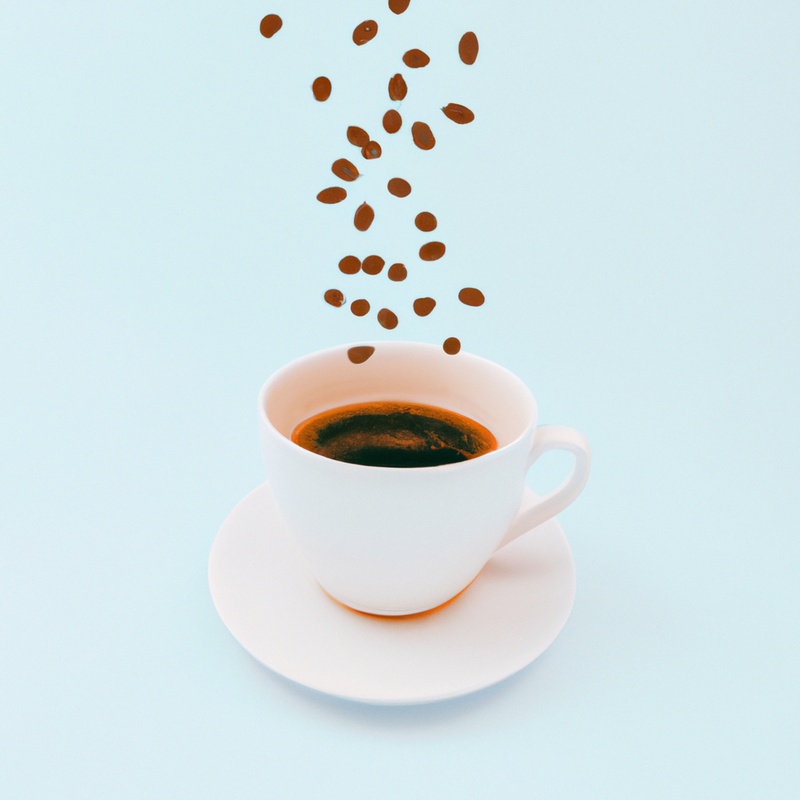Key Takeaways:
- Cold brew coffee is generally less acidic than hot brewed coffee.
- The cold brewing process produces a smoother, less bitter taste in coffee.
- Cold brew coffee may be easier on the stomach for those with acid reflux or sensitive stomachs.
- The lower acidity in cold brew coffee may help preserve the flavor and quality of the coffee beans for a longer period.
Are you a coffee lover who craves that rich, smooth flavor but can’t handle the acidity?
Well, you’re in for a treat! Today, we’re diving deep into the world of cold brew coffee to answer the burning question: Is cold brew coffee less acidic?
We’ll explore the factors that contribute to the acidity in coffee and why cold brew coffee is known for its lower acid levels.
Plus, we’ll uncover the host of benefits that come with enjoying a cup of low-acid coffee.
And don’t worry, we’ve got you covered with a simple cold brew coffee recipe and some handy brewing tips.
So grab your java and let’s get started!
What Makes Coffee Acidic?
Coffee acidity is influenced by various factors, including the type of coffee bean and the way it is roasted.
The Acidity in Coffee
The acidity in coffee refers to its tart or sour taste, which is influenced by various factors. These factors include the type of coffee bean, the origin of the bean, the roast level, and the brewing method.
Coffee generally has a pH value ranging from 4 to 6, making it mildly acidic.
However, certain factors, such as the brewing time and temperature, can affect the acidity level. Cold brew coffee is typically less acidic because it is brewed using cold water over a longer period, resulting in a smoother and less acidic flavor profile.
Factors Affecting Coffee Acidity
Factors affecting coffee acidity include the type of coffee bean, the roast level, and the brewing method. Arabica beans generally have higher acidity than Robusta beans.
Lighter roasts tend to be more acidic than darker roasts.
Brewing methods such as drip brewing or espresso extraction can also impact acidity levels. Ultimately, personal preference plays a key role in determining the desired level of acidity in your coffee.

Understanding Cold Brew Coffee
Cold brew coffee is a method of making coffee that involves steeping coffee grounds in cold water for an extended period of time.
What is Cold Brew Coffee?
Cold brew coffee is a method of making coffee that involves steeping coffee grounds in cold water for an extended period of time, typically 12-24 hours. Unlike traditional hot brewed coffee, cold brew does not involve any heat, which results in a smoother and less acidic flavor profile.
The extended steeping time allows for a slower extraction process, resulting in a less acidic and more concentrated coffee concentrate.
Cold brew coffee is typically served over ice or mixed with water, milk, or other flavorings to create a refreshing and flavorful beverage.

The Cold Brewing Process
The cold brewing process involves steeping coffee grounds in cold water for an extended period, typically ranging from 12 to 24 hours. This slow extraction process allows for a smooth and less acidic brew compared to hot brewing methods.
The coffee is often filtered after steeping to remove any sediment or grounds, resulting in a clean and refreshing flavor.
Cold brew can be enjoyed on its own, diluted with water, or mixed with milk or ice for a refreshing iced coffee. So give cold brew a try and experience its unique flavor profile!
Is Cold Brew Coffee Less Acidic?
Cold brew coffee is known for having lower acidity levels compared to traditional hot brewed coffee. Let’s explore why this is the case.
Acid Levels in Cold Brew Coffee
When it comes to acid levels in cold brew coffee, you might be wondering how it compares to regular hot brewed coffee. Well, the good news is that cold brew coffee tends to be less acidic than its hot counterpart.
In the cold brewing process, the acidic compounds in the coffee beans are extracted at a slower rate, resulting in a smoother and less acidic taste.
This makes it a great option for those who have sensitive stomachs or are looking for a less harsh coffee experience. Overall, cold brew coffee offers a milder and less acidic alternative to traditional hot brewed coffee.

Why Cold Brew Coffee Is Less Acidic
Cold brew coffee is less acidic because of the brewing process. Instead of using hot water which extracts more acids, cold brew is made by steeping coffee grounds in cold or room temperature water for an extended period of time, usually 12-24 hours.
This slow extraction process produces a smoother and less acidic flavor profile.
Additionally, the lower temperature inhibits the release of certain acids, resulting in a more gentle and enjoyable coffee experience. It’s a great option for those with sensitive stomachs or acid reflux.
Benefits of Low-Acid Coffee
Low-acid coffee can be easier on your stomach and reduce the risk of tooth enamel damage.
Easier on the Stomach
Easier on the Stomach Cold brew coffee is generally considered to be easier on the stomach compared to hot brewed coffee. The reason for this is that the slow and cold brewing process extracts less acid from the coffee beans, resulting in a less acidic cup of coffee.
This lower acidity can help reduce the likelihood of experiencing digestive issues, such as acid reflux or stomach discomfort.
Many people with sensitive stomachs find that switching to cold brew coffee allows them to enjoy their daily caffeine fix without the unpleasant side effects.
Reduced Risk of Tooth Enamel Damage
Cold brew coffee can help reduce the risk of tooth enamel damage. The lower acidity levels in cold brew coffee compared to hot brewed coffee means less damage to tooth enamel.
This is because acidic drinks can erode and weaken tooth enamel over time, leading to tooth sensitivity and cavities.
By choosing cold brew coffee, you can enjoy your favorite beverage while taking care of your oral health. Just remember to drink it in moderation and maintain good oral hygiene habits.
Reduced Heartburn and Acid Reflux
Reduced Heartburn and Acid Reflux: Low-acid coffee, like cold brew, can help reduce heartburn and acid reflux. Its lower acidity is gentler on the stomach, causing less discomfort and irritation.
This can be especially beneficial for individuals with sensitive digestive systems or gastrointestinal issues.
By opting for low-acid coffee, you can enjoy your favorite beverage without the unpleasant side effects.
How to Make Cold Brew Coffee at Home
Make delicious cold brew coffee at home with this simple recipe and handy brewing tips.
Cold Brew Coffee Recipe
Cold Brew Coffee Recipe:
- Coarsely grind your favorite coffee beans.
- In a jar or pitcher, mix 1 cup of coffee grounds with 4 cups of cold water.
- Stir gently to make sure all grounds are saturated.
- Cover the container and place it in the refrigerator for 12-24 hours.
- After steeping, strain the coffee through a fine-mesh sieve or coffee filter.
- Dilute with water or milk according to taste.
- Serve over ice and enjoy the smooth, rich flavor of homemade cold brew coffee.
Tips for Brewing Cold Brew Coffee
To brew a delicious cold brew coffee at home, here are some tips for you:
- Use fresh, coarsely ground coffee beans: Start with high-quality coffee beans and grind them to a coarse consistency. This allows for better extraction and enhances the flavors.
- Use a proper coffee-to-water ratio: A general guideline is to use a 1:4 coffee-to-water ratio. For example, if you use 1 cup of coffee grounds, you’ll need 4 cups of cold water. Adjust the ratio according to your preference.
- Steep it in the refrigerator: Mix the coffee grounds and cold water in a container, then cover and refrigerate for at least 12 hours, or up to 24 hours. This slow steeping process will result in a smoother and less acidic brew.
- Strain the coffee: After steeping, strain the coffee grounds using a fine mesh sieve or a coffee filter. This will remove any sediment and ensure a clean cup of cold brew.
- Dilute and serve: Cold brew coffee is usually stronger than regular coffee, so you may want to dilute it with water or milk before serving. Add ice cubes if desired, and enjoy your refreshing cold brew!
Remember, brewing cold brew coffee requires patience and experimenting to find the perfect flavor profile that suits your taste.
Have fun exploring different techniques and variations to craft your own unique cold brew coffee at home!
Frequently Asked Questions
Does cold brew coffee have caffeine?
Yes, cold brew coffee does have caffeine.
While the exact amount of caffeine may vary depending on the brand and brewing method, cold brew coffee generally contains caffeine just like any other type of coffee.
The main difference lies in the brewing process, which involves steeping coffee grounds in cold water for an extended period of time.
This results in a smoother and less acidic taste, but the caffeine content remains.
So, if you’re looking for a less acidic coffee option, cold brew is a great choice, but it still provides that much-needed caffeine kick.
Can I use regular coffee for making cold brew?
Yes, you can absolutely use regular coffee for making cold brew! In fact, regular coffee is often the best choice for cold brew because it yields a smoother, less bitter flavor compared to other types of coffee.
Just make sure to use a coarse grind and a higher coffee-to-water ratio, as the cold brewing process requires a longer extraction time.
Experiment with different varieties and strengths of regular coffee to find your perfect cold brew taste.
Cheers!
How long does cold brew coffee last?
Cold brew coffee typically lasts for up to 2 weeks when stored in the refrigerator.
Because it’s brewed with cold water, it tends to have a longer shelf life than regular coffee.
Remember to keep it tightly sealed in a jar or bottle to maintain freshness.
Enjoy your delicious cold brew for days to come!
How do I dilute cold brew concentrate?
To dilute cold brew concentrate, start by filling a glass with ice.
Then, add equal parts water and cold brew concentrate to the glass.
Stir well to mix everything together.
Adjust the ratio of water to concentrate according to your preference.
You can also experiment with adding milk or sweeteners for extra flavor.
Enjoy your delicious, refreshing cold brew!
Final Verdict
Cold brew coffee is indeed less acidic compared to hot brewed coffee.
The slow steeping process of cold brew extracts fewer acidic compounds from the beans, resulting in a smoother and less harsh flavor profile.
This lower acidity makes cold brew coffee a great option for those with sensitive stomachs, as it reduces the risk of heartburn and acid reflux.
Moreover, it is also less likely to damage tooth enamel.
To enjoy these benefits, you can easily make cold brew coffee at home using a simple recipe and some helpful tips.
So go ahead and give it a try – your taste buds and stomach will thank you!
